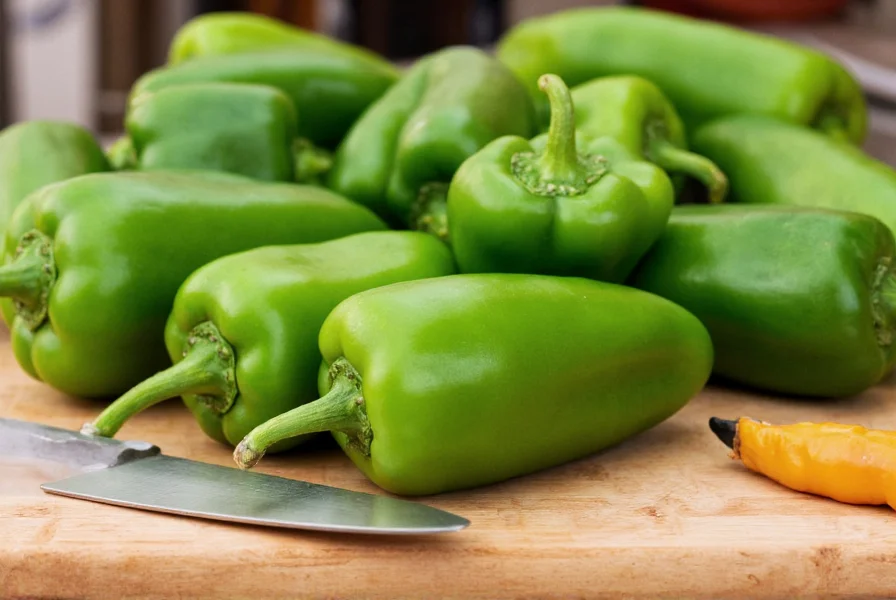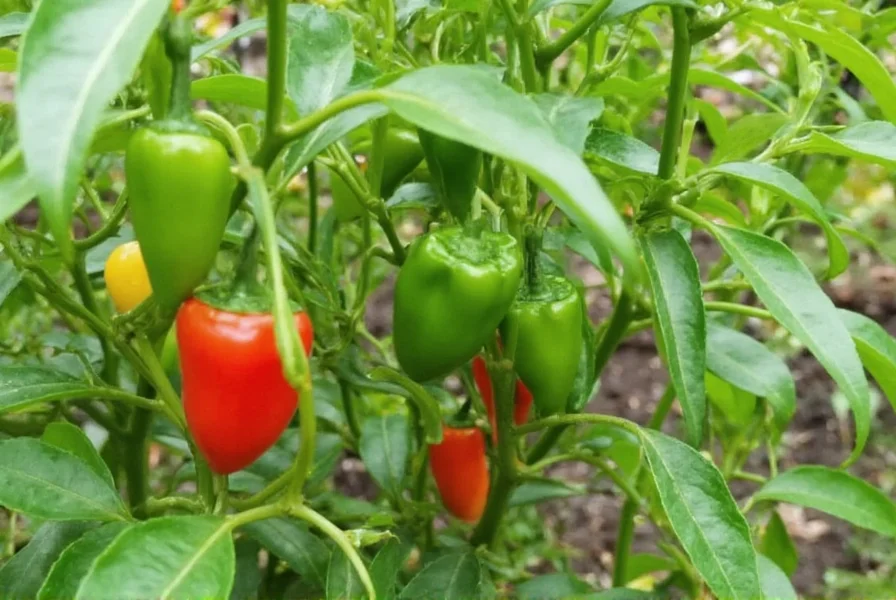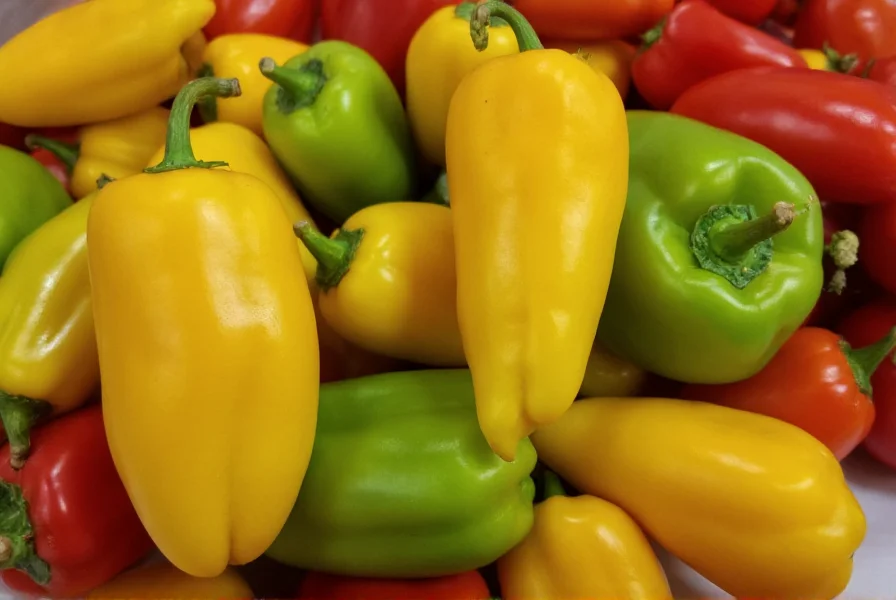Anaheim peppers represent one of America's most versatile culinary chilies, bridging the gap between bell peppers and spicier varieties like jalapeños. These elongated peppers measure 6-10 inches long with thin walls, making them ideal for stuffing, roasting, and incorporating into sauces where their mild heat won't dominate other flavors.
Origin and Historical Significance
Despite their California-associated name, Anaheim peppers actually trace their roots to New Mexico. In the early 1900s, a farmer named Emilio Ortega brought seeds from New Mexico to Anaheim, California, where they gained popularity. The "Anaheim" name stuck as the variety spread throughout California's agricultural regions. Originally called "New Mexico No. 9," these peppers became foundational to Southwestern American cuisine, particularly in dishes like green chili stew and stuffed pepper recipes.
Physical Characteristics and Heat Profile
Anaheim peppers start as vibrant green fruits that gradually mature to a deep red. Their thin skin and relatively large size distinguish them from thicker-walled peppers like bell peppers. When evaluating anaheim pepper heat level, they register between 500-2,500 Scoville Heat Units (SHU), placing them significantly milder than jalapeños (2,500-8,000 SHU) but with more kick than bell peppers (0 SHU).
| Pepper Variety | Scoville Heat Units | Flavor Profile |
|---|---|---|
| Anaheim Pepper | 500-2,500 | Grassy, slightly sweet, mild heat |
| Jalapeño | 2,500-8,000 | Grassy, bright, medium heat |
| Poblano | 1,000-2,000 | Earthy, rich, mild heat |
| Bell Pepper | 0 | Sweet, crisp, no heat |
Their heat can vary significantly based on growing conditions—peppers grown in hotter, drier climates tend to develop more capsaicin. When comparing anaheim peppers vs jalapeno, the Anaheim offers a more subtle heat that allows other ingredients to shine, making it perfect for dishes where you want chili flavor without intense spice.

Culinary Applications and Preparation Techniques
What do anaheim peppers taste like? They deliver a clean, grassy flavor with subtle sweetness and just enough heat to register on your palate without causing discomfort. This balanced profile makes them exceptionally versatile in the kitchen.
Professional chefs often employ these preparation methods:
- Roasting anaheim peppers: Char over open flame or under broiler, then steam in a covered bowl before peeling. This enhances their natural sweetness and creates a smoky depth perfect for rellenos or sauces.
- Stuffing applications: Their long shape and thin walls make them ideal vessels for cheese, meat, or grain fillings that can be baked until tender.
- Chili verde base: Blended roasted Anaheim peppers form the foundation of many New Mexican green chili recipes.
- Pickling potential: Their firm texture holds up well to vinegar-based pickling solutions for tangy condiments.
Substitution Options and Availability
When fresh Anaheim peppers aren't available, understanding proper anaheim pepper substitutes becomes essential. The best alternatives depend on whether you prioritize flavor or heat:
- Poblano peppers: Nearly identical heat level with earthier flavor; excellent for stuffing
- Cubanelle peppers: Slightly milder with similar shape and thin walls
- Green bell peppers: For zero-heat applications where shape matters more than flavor
- Jalapeños (in reduced quantity): When you need more heat but similar flavor profile
Dried Anaheim peppers become "chile seco del norte" and can substitute for pasilla peppers in mole sauces. Many grocery stores now carry canned roasted green chilies labeled as "mild green chilies," which are typically made from Anaheim peppers.
Growing Anaheim Peppers at Home
For gardeners interested in growing anaheim peppers, these plants thrive in warm climates with full sun exposure. They require 70-80 days to maturity from transplanting and prefer well-draining soil with consistent moisture. Unlike hotter varieties, Anaheim peppers don't necessarily get spicier when stressed—they produce best with regular watering and fertilization.
Harvest when peppers reach 6-8 inches in length for green stage, or allow to ripen to red for sweeter flavor and slightly higher heat. The plants typically grow 2-3 feet tall and benefit from staking as the fruit develops.

Nutritional Benefits and Storage Methods
Examining anaheim pepper nutrition reveals they're rich in vitamin C (providing about 120% of daily value per pepper), vitamin A, and capsaicinoids that may offer metabolic benefits. Like other chili peppers, they contain antioxidants that support immune function.
For optimal storage:
- Fresh peppers: Keep in crisper drawer for 1-2 weeks
- Roasted peppers: Store in olive oil in airtight container for up to 3 months
- Freezing: Roast, peel, and freeze whole for year-round use
- Drying: String and air-dry or use dehydrator for long-term storage
Signature Dishes Featuring Anaheim Peppers
Chefs across the American Southwest rely on Anaheim peppers for these classic preparations:
- Chile Relleno: The traditional version uses Anaheim rather than the often-assumed poblano
- Green Chile Stew: New Mexico's signature dish featuring roasted Anaheim peppers
- California-Style Salsa Verde: Blended roasted Anaheim with tomatillos and cilantro
- Stuffed Pepper Casserole: Sliced Anaheims filled with cheese and baked in tomato sauce
When developing recipes using these peppers, remember that removing seeds and membranes reduces heat by up to 80%, allowing you to control the spice level while maintaining flavor.
Frequently Asked Questions
Are Anaheim peppers the same as California peppers?
Yes, Anaheim peppers are frequently labeled as California peppers in grocery stores. They're the same variety—long, mild green chilies ideal for roasting and stuffing. The dual naming reflects their agricultural history, having been popularized in both Anaheim and throughout California's Central Valley.
Can you eat Anaheim peppers raw?
Absolutely. Raw Anaheim peppers have a crisp texture and grassy flavor with mild heat that works well in salads, salsas, and as a fresh garnish. Their thin walls make them more palatable raw than thicker-walled peppers like poblanos. For the mildest experience, remove seeds and membranes before consuming raw.
How hot are Anaheim peppers compared to other common varieties?
Anaheim peppers range from 500-2,500 Scoville units, making them milder than jalapeños (2,500-8,000 SHU) but slightly hotter than poblanos (1,000-2,000 SHU). They're approximately 5-50 times milder than habaneros. The heat can vary based on growing conditions—drier, hotter climates produce spicier peppers. When substituting, use 1.5-2 Anaheim peppers for each jalapeño called for in a recipe.
What's the best way to roast Anaheim peppers?
The optimal method for roasting Anaheim peppers involves placing them directly over a gas flame, under a broiler, or on a grill until the skin blackens and blisters (about 5-7 minutes per side). Transfer to a covered bowl for 10 minutes to steam, then peel starting from the stem end. This technique preserves their delicate flesh while enhancing sweetness and adding smoky complexity essential for authentic Southwestern dishes.
Can you freeze Anaheim peppers?
Yes, freezing is an excellent preservation method for Anaheim peppers. For best results, roast, peel, and slice them before freezing in airtight containers or vacuum-sealed bags. They'll maintain quality for 10-12 months. You can also freeze raw peppers, but roasting first enhances flavor and texture upon thawing. Frozen peppers work perfectly in cooked dishes like stews, sauces, and casseroles but aren't ideal for raw applications after thawing.











 浙公网安备
33010002000092号
浙公网安备
33010002000092号 浙B2-20120091-4
浙B2-20120091-4